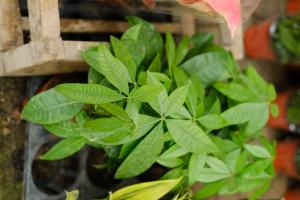What Plant Zone is California?
Introduction
California is a vast state with a diverse range of climates and geographic features, from the mountains to the coast. Each region of California has its unique plant life and vegetation types. Understanding the plant zones of California is essential for gardening, farming, landscaping, and other plant-based activities. In this article, we鈥檒l explore the different plant zones of California and what plants thrive in each of them.
What are Plant Zones?
Plant zones are areas that have similar climatic conditions, which are crucial for plant growth and survival. The United States Department of Agriculture (USDA) divides the United States into 13 distinct plant zones based on average minimum temperatures. This classification helps gardeners and horticulturists identify the types of plants that will thrive in a particular region.
Plant Zones in California
California has nine USDA plant zones, ranging from zone 4 in the Sierra Nevada Mountains to zone 11 along the coastline. The zones are determined based on the average minimum temperature of each area. The higher the number, the warmer the climate. Here鈥檚 a breakdown of the plant zones in California:
Zone 4
Zone 4 includes the higher mountain areas in California, such as the Sierra Nevada Mountains. These areas have cold temperatures, with annual average minimum temperatures ranging from -20 degrees Fahrenheit to -30 degrees Fahrenheit. Some plants that thrive in this zone are mountain hemlocks, whitebark pines, and subalpine fir.
Zone 5
Zone 5 covers some areas of the Sierra Nevada Mountains and the northeastern part of California. This zone features cold winters, with average minimum temperatures ranging from -10 degrees Fahrenheit to -20 degrees Fahrenheit. Common plants found in this zone include quaking aspen, blue spruce, and Douglas fir.
Zone 6
Zone 6 includes most parts of the Sierra Nevada Mountains, the Modoc Plateau, and some parts of the Coast Ranges. The average minimum temperature in this zone ranges from -10 degrees Fahrenheit to 0 degrees Fahrenheit. Plants that can thrive in this zone include lodgepole pine, black cottonwood, and Engelmann spruce.
Zone 7
Zone 7 consists of the lower elevations of the Sierra Nevada Mountains and the higher elevations of the Coast Ranges. This zone has cold winters, with average minimum temperatures ranging from 0 degrees Fahrenheit to 10 degrees Fahrenheit. Common plants in this zone are black oak, canyon live oak, and madrone.
Zone 8
Zone 8 includes most parts of the Central Valley, the Central Coast, and the Southern California valleys. The average minimum temperature in this zone ranges from 10 degrees Fahrenheit to 20 degrees Fahrenheit. Plants that thrive in this zone include almond trees, cherry trees, and fig trees.
Zone 9
Zone 9 consists of inland parts of Southern California and the southern parts of the Central Valley. This zone has warm winters, with average minimum temperatures ranging from 20 degrees Fahrenheit to 30 degrees Fahrenheit. Common plants in this zone are citrus trees, avocado trees, and succulents.
Zone 10
Zone 10 covers the coastal areas of Southern California, including Los Angeles and San Diego. The average minimum temperature in this zone ranges from 30 degrees Fahrenheit to 40 degrees Fahrenheit. Plants that thrive in this zone include bougainvillea, hibiscus, and palm trees.
Zone 11
Zone 11 comprises the warmest areas of California along the coast, including San Francisco, Santa Barbara, and San Diego. The average minimum temperature in this zone is above 40 degrees Fahrenheit. Some plants that can grow in this zone are passion fruit, bird-of-paradise, and cacti.
Conclusion
Understanding the plant zones of California is essential for gardeners and horticulturists who want to grow healthy and vibrant plants. Each plant zone has its unique climatic conditions and vegetation types, which dictate what plants can thrive in each region. By following the USDA plant zone map, gardeners and horticulturists can identify the best plants to grow in their respective regions, resulting in successful and thriving gardens.

 how many times do yo...
how many times do yo... how many planted tre...
how many planted tre... how many pine trees ...
how many pine trees ... how many pecan trees...
how many pecan trees... how many plants comp...
how many plants comp... how many plants can ...
how many plants can ... how many plants and ...
how many plants and ... how many pepper plan...
how many pepper plan...






























